#rather than intensive agriculture
Text
@oligopsoriasis I don't know if you're still interested in the farming thing, but, regarding your land efficiency vs. energy-efficiency thing:
My impression is that, when designing an agricultural system, the basic trade-off is labor against land area, i.e. you can reduce labor inputs by using more land and reduce your land footprint by sinking more labor into it.
In this framing, I think industrial row-crop monocultures are extensive rather than intensive, i.e. they sacrifice land to save labor as well as/rather than energy to save land. Sustainability and higher absolute production might well not mean using more land.
A lot of the articles and papers that talk about modern sustainable systems trumpet them as Actually Much More Efficient than “industrial” agriculture, when, really, they’re just opting for the other end of the ancient trade-off -- they lead with productivity statistics calculated entirely on land use, and quietly note somewhere down below that “of course, this takes vastly more work, and is devilishly complicated to maintain...”
But that doesn’t mean they aren’t a better bet! The point is, there are trade-offs to be made other than technology-i.e.-what-we-have-now/primitivism. It means we’d need more greenhouse-minders and algae-scrapers, yes, maybe even more people growing beans in raised beds, but that’s Jobs, not a return to peasant agriculture.
(I’m not really considering the original thing about hunting, meat just doesn’t seem likely to ever be efficient, except on marginal lands, where it couldn’t support modern population densities, alligators or no.)
[some rambling speculation about historical intensive systems:]
Anyway, historically, intensive, labor-heavy, small-land-footprint systems make sense if you have a lot of labor and not a lot of land, and include the various clever Native American polyculture systems (the chinampa, the three sisters), but also potato-farming (Ireland, before the famine, being prototypically labor-rich and area-poor: a densely-populated, highly fertile area in which people had to subsist on glorified garden-plots), modern Dutch-style greenhouse fruit/veg/cash-crop cultivation, maybe what the Cubans do. Wet rice cultivation and terrace-farms are possibly in this category. “Vertical farming”, if it’s not a nothingburger, probably will be too (multistory buildings are capital, capital is dead labor, lotta walking up stairs, etc.).
(Classic Geertzian involution is when you can’t get any more intensive, so you have to sink more people, more bodies, more hours into it, without hope of improving productivity per head.)
My conjecture is that intensive systems make more sense when you don’t have draft animals to give you access to a larger area and incentivize more drivable open layouts and planting/harvesting techniques.
#politics#history#agriculture#edited bc it sounded like the last paragraph was referring to involution#rather than intensive agriculture
81 notes
·
View notes
Text
academia sign as 𝔞𝔠𝔞𝔡𝔢𝔪𝔦𝔞 𝔞𝔢𝔰𝔱𝔥𝔢𝔱𝔦𝔠𝔰
academia (829)
𝔠𝔥𝔞𝔬𝔱𝔦𝔠 𝔞𝔠𝔞𝔡𝔢𝔪𝔦𝔞


aries / 1st house academia: aries in academia approaches learning with enthusiasm and a pioneering spirit. they thrive in competitive environments, enjoying subjects that allow them to take the lead, such as sports science, entrepreneurship, or anything requiring bold, innovative thinking. their learning style is hands-on and action-oriented, preferring to dive into projects rather than sit through lectures. quick to grasp new concepts, aries students excel in fast-paced, dynamic settings where they can showcase their initiative and drive. they are natural leaders in group work, often inspiring others with their energy and passion.
chaotic academia vibes: red bull, coffee, late-night study sessions, messy desk, sticky notes everywhere, highlighters galore, backpack overflowing, headphones tangled, running late, cramming, competitive studying, impulsive learning, last-minute cramming, energetic study sessions, motivational posters, pomodoro technique, study groups, mind maps, flash cards, music playlists
major & minor in college: history, english, psychology, theater, business, creative writing, philosophy, computer science, art history, sociology
𝔡𝔞𝔯𝔨 𝔞𝔠𝔞𝔡𝔢𝔪𝔦𝔞
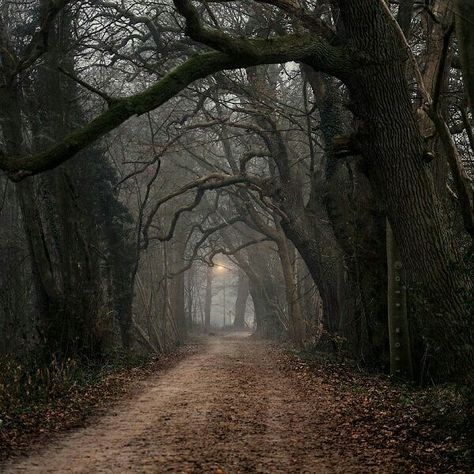

taurus / 2nd house academia: taurus in academia is methodical and steady, approaching learning with patience and determination. they excel in subjects that involve tangible results or a connection to nature, such as agriculture, culinary arts, or finance. taurus students prefer a structured learning environment, where they can take their time to absorb information deeply and thoroughly. they have a strong memory and excel in retaining facts, often mastering subjects through repetition and consistent effort. their learning style is practical and grounded, focusing on real-world applications and long-term value.
dark academia vibes: leather-bound notebooks, vintage fountain pen, cozy sweater, warm coffee, comfortable armchair, candles, classical music, antique bookshelves, quiet library, natural light, slow & steady approach, consistent studying, structured routine, mindful studying, note-taking, reading extensively, researching deeply, essay writing, critical thinking, patience & perseverance,
major & minor in college: literature, history, art history, philosophy, classical studies, music, latin, greek, anthropology, environmental studies,
scorpio / 8th house academia: scorpio in academia is intensely focused and driven, diving deep into subjects that fascinate them, especially those involving psychology, criminology, or anything that uncovers hidden truths. they are natural researchers, drawn to mysteries and complexities, excelling in environments that require investigative skills and critical thinking. scorpio students prefer to study in private, where they can immerse themselves fully without distractions. they have a talent for uncovering details that others might overlook, and their determination to master a subject is unmatched. passionate and resilient, scorpio learners often emerge as experts in their chosen fields.
dark academia vibes: black coffee, leather jacket, intricate jewelry, vintage records, haunted library, gothic architecture, mysterious aura, intense gaze, quiet solitude, deep thoughts, intense focus, deep research, analytical thinking, critical analysis, debating, persuasive writing, problem-solving, independent study, night owl, passionate learning,
major & minor in college: psychology, philosophy, criminal justice, history, political science, sociology, anthropology, mythology, astronomy, creative writing,
𝔱𝔥𝔢𝔞𝔱𝔯𝔢 𝔞𝔠𝔞𝔡𝔢𝔪𝔦𝔞


gemini / 3rd house academia: gemini in academia is curious and versatile, thriving in environments where they can explore a wide range of subjects. they are natural communicators, excelling in fields like journalism, linguistics, or social sciences, where their quick wit and love for information can shine. gemini students prefer a dynamic, interactive learning environment, enjoying discussions, debates, and collaborative projects. their learning style is fast-paced and adaptable, allowing them to pick up new concepts with ease and shift focus between topics effortlessly. always eager to learn something new, gemini keeps their mind sharp by continuously seeking knowledge in various fields.
theatre academia vibes: script book, makeup bag, costumes, props, rehearsal space, stage lights, backstage passes, playbills, acting classes, impromptu performances, versatility, adaptability, improvisation, memorization, public speaking, character analysis, script analysis, ensemble work, storytelling, critical thinking
major & minor in college: theater, english, creative writing, communication studies, film studies, music, dance, history, psychology, sociology,
𝔠𝔬𝔷𝔶 𝔞𝔠𝔞𝔡𝔢𝔪𝔦𝔞


cancer / 4th house academia: cancer in academia is intuitive and emotionally connected to their studies, often drawn to subjects that resonate with their personal experiences, such as history, literature, or psychology. they excel in environments that feel nurturing and supportive, preferring to learn in a space where they feel safe and comfortable. cancer students have a strong memory, especially for details that evoke an emotional response, and they often approach learning with empathy and care. their learning style is reflective and deep, focusing on understanding the emotional and human aspects of any subject. sensitive to the needs of others, cancer can also be a compassionate and supportive peer in group settings.
cozy academia vibes: knitting needles, teacup, soft blanket, candles, cozy armchair, bookshelf filled with sentimental books, family photos, journal, soft music, homemade snacks, emotional intelligence, empathy, nurturing oneself, creating a comfortable study space, mindful studying, journaling, connecting with others, supporting others, patience & perseverance, emotional regulation
major & minor in college: english, history, psychology, sociology, social work, counseling, child development, family studies, art history, creative writing
𝔯𝔬𝔶𝔞𝔩 𝔞𝔠𝔞𝔡𝔢𝔪𝔦𝔞


leo / 5th house academia: leo in academia is confident and expressive, thriving in subjects where they can showcase their creativity and leadership, such as performing arts, literature, or leadership studies. they enjoy being at the center of discussions and excel in environments where their ideas and talents are recognized. leo students are passionate learners who bring enthusiasm to their studies, often inspiring others with their energy and charisma. their learning style is dynamic and interactive, preferring presentations and group projects where they can shine. with a natural flair for storytelling and self-expression, leo often excels in areas that allow them to be both creative and influential.
royal academia vibes: crown-shaped stationery, velvet robes, gold jewelry, vintage fountain pen, grand library, ornate furniture, elegant calligraphy, classical music, high-quality textbooks, personalized study supplies, confidence, leadership, public speaking, motivation, goal setting, networking, presentation skills, time management, creativity, passion
major & minor in college: history, political science, business, theater, art history, music, philosophy, classical studies, public relations, creative writing
𝔟𝔬𝔱𝔞𝔫𝔦𝔠𝔞𝔩 𝔞𝔠𝔞𝔡𝔢𝔪𝔦𝔞
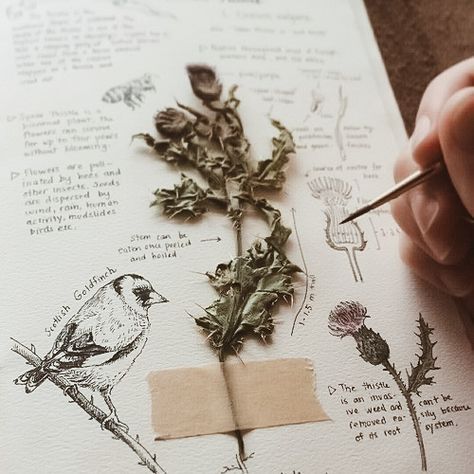

virgo / 6th house academia: virgo in academia is analytical and detail-oriented, excelling in subjects that require precision and critical thinking, such as mathematics, science, or technical writing. they have a strong work ethic and prefer structured learning environments where they can methodically work through complex problems. virgo students are diligent researchers, often going above and beyond to ensure they fully understand a topic, and they have a knack for organizing information logically. their learning style is meticulous and focused, thriving on clear instructions and practical applications. with a keen eye for detail, virgo often excels in areas that demand accuracy and thoroughness.
botanical academia vibes: herbarium, plant journal, botanical prints, terrarium, gardening tools, natural light, plant-based stationery, herbal tea, nature-inspired décor, organized study space, organization, planning, time management, detail-oriented approach, note-taking, researching, problem-solving, critical thinking, patience, perseverance
major & minor in college: biology, environmental science, botany, horticulture, chemistry, agriculture, nutrition, health sciences, art history, creative writing
𝔯𝔬𝔪𝔞𝔫𝔱𝔦𝔠 𝔞𝔠𝔞𝔡𝔢𝔪𝔦𝔞


libra / 7th house academia: libra in academia is balanced and diplomatic, drawn to subjects that involve relationships, aesthetics, and justice, such as law, art, or social sciences. they excel in collaborative learning environments, enjoying discussions and group projects where they can exchange ideas and mediate differing opinions. libra students have a natural talent for seeing multiple perspectives, which makes them excellent at analyzing complex issues and finding harmonious solutions. their learning style is interactive and social, thriving in settings that allow for cooperation and mutual respect. with a strong sense of fairness and a love for beauty, libra often excels in areas that combine intellectual rigor with creativity.
romantic academia vibes: love letters, poetry collection, vintage jewelry, soft/pastel colors, romantic novels, flower arrangements, classical music, art galleries, beautiful stationery, cozy cafes, collaboration, harmony, diplomacy, balance, aesthetic appreciation, empathy, persuasion, critical thinking, creativity, open-mindedness
major & minor in college: english, history, art history, philosophy, psychology, sociology, communication studies, music, creative writing, design
𝔞𝔡𝔳𝔢𝔫𝔱𝔲𝔯𝔬𝔲𝔰 𝔞𝔠𝔞𝔡𝔢𝔪𝔦𝔞
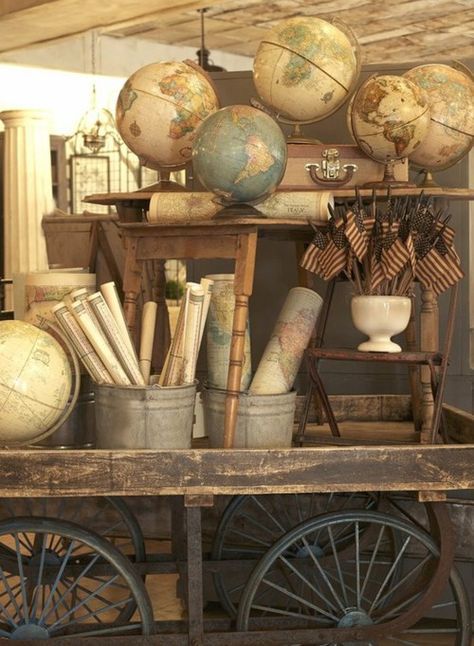
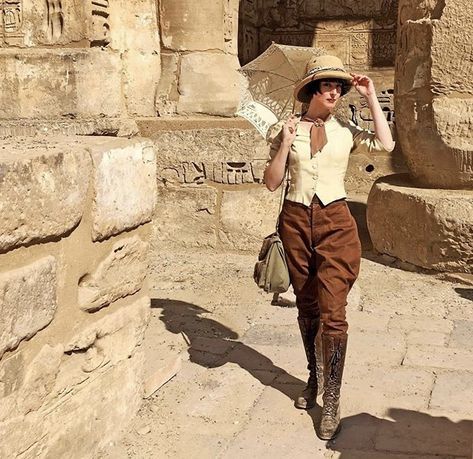
sagittarius / 9th house academia: sagittarius in academia is adventurous and curious, drawn to subjects that expand their horizons, such as philosophy, travel, or global studies. they thrive in environments that offer freedom and exploration, preferring to learn through experience, travel, and broad, open-ended discussions. sagittarius students have a natural enthusiasm for big ideas and are often inspired by the pursuit of knowledge that challenges conventional thinking. their learning style is spontaneous and wide-ranging, excelling in areas where they can explore different cultures, beliefs, and philosophies. with an innate love for wisdom and truth, sagittarius often excels in fields that encourage lifelong learning and intellectual growth.
adventurous academia vibes: travel journal, global map, adventure novels, passport, backpack, camping gear, telescope, world atlas, foreign language textbooks, wanderlust-themed stationery, curiosity, open-mindedness, exploration, adaptability, risk-taking, global perspective, intercultural communication, problem-solving, independent study, passion for learning
major & minor in college: history, geography, anthropology, philosophy, foreign languages, international studies, environmental science, economics, creative writing, journalism
𝔴𝔦𝔫𝔱𝔢𝔯 𝔞𝔠𝔞𝔡𝔢𝔪𝔦𝔞


capricorn / 10th house academia: capricorn in academia is disciplined and strategic, favoring subjects that offer practical applications and long-term value, such as business, engineering, or finance. they excel in structured, goal-oriented environments where they can set clear objectives and work methodically towards achieving them. capricorn students have a strong work ethic and are adept at managing their time efficiently, often thriving on detailed planning and rigorous analysis. their learning style is focused and persistent, with a preference for mastering foundational concepts before advancing. with a keen sense of responsibility and determination, capricorn often excels in areas that require patience and sustained effort.
winter academia vibes: thick coat, scarf, warm coffee, cozy sweater, planner, bookshelf filled with textbooks, quiet study space, pen & paper, minimalist décor, structured routine, discipline, time management, goal setting, planning, persistence, problem-solving, critical thinking, researching, note-taking, long-term planning
major & minor in college: business, economics, law, political science, accounting, engineering, computer science, mathematics, history, philosophy
𝔣𝔲𝔱𝔲𝔯𝔦𝔰𝔱𝔦𝔠 𝔞𝔠𝔞𝔡𝔢𝔪𝔦𝔞

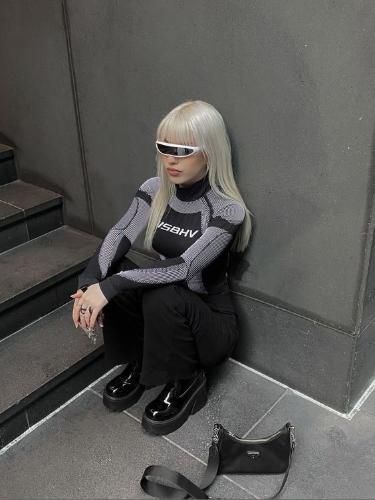
aquarius / 11th house academia: aquarius in academia is innovative and independent, gravitating towards subjects that involve technology, future trends, or social change, such as engineering, environmental science, or sociology. they thrive in learning environments that encourage original thinking and unconventional approaches, often preferring to explore new ideas and challenge established norms. aquarius students are skilled at grasping complex, abstract concepts and enjoy engaging in collaborative projects that push boundaries and promote collective progress. their learning style is progressive and exploratory, with a strong inclination towards experimenting with novel methods and solutions. with a keen interest in improving the world, aquarius often excels in fields that foster creativity and forward-thinking.
futuristic academia vibes: smartwatch, laptop, tech gadgets, futuristic eyewear, minimalist design, neon lights, sci-fi novels, futuristic architecture, virtual reality headset, sustainable products, innovation, problem-solving, critical thinking, future-oriented thinking, collaboration, interdisciplinary learning, ethical considerations, lifelong learning, adaptability, social consciousness
major & minor in college: computer science, engineering, physics, astronomy, artificial intelligence, environmental science, sociology, political science, psychology, philosophy
𝔬𝔠𝔢𝔞𝔫 𝔞𝔠𝔞𝔡𝔢𝔪𝔦𝔞


pisces / 12th house academia: pisces in academia is imaginative and intuitive, drawn to subjects that explore the arts, spirituality, or the human psyche, such as creative writing, music, or psychology. they excel in environments that allow for introspection and creative expression, often thriving in less structured settings that encourage personal interpretation and emotional depth. pisces students have a unique ability to grasp abstract concepts and connect disparate ideas, making them skilled at synthesizing information in innovative ways. their learning style is fluid and adaptable, with a preference for exploring topics through personal experiences and intuitive insights. with a deep sense of empathy and creativity, pisces often excels in fields that involve understanding and expressing the complexities of the human experience.
ocean academia vibes: seashells, aquarium, ocean-themed stationery, beach towel, nautical decor, marine biology books, beach reads, ocean-inspired jewelry, dreamcatcher, calming music, intuition, empathy, creativity, imagination, meditation, mindfulness, visualization, dream journaling, connection with nature, emotional intelligence
major & minor in college: marine biology, oceanography, environmental science, psychology, art history, creative writing, music, philosophy, sociology, religious studies,
all observations belong to @pearlprincess02
#academia#aries academia#taurus academia#gemini academia#cancer academia#leo academia#virgo academia#libra academia#scorpio academia#sagittarius academia#capricorn academia#aquarius academia#pisces academia#astrology#astro notes#astro observations#astro community#astrology observations#astro tumblr#astrology notes#astroblr#astrology aesthetic#dark academia#chaotic academia#theatre academia#cozy academia#romantic academia#winter academia#ocean academia
484 notes
·
View notes
Text
"Abby Allen has no problem with her neighbours peering over her luxuriant hedges to see what she is up to on her farm.
For years she has been carrying out ad hoc experiments with wildlife and farming techniques; in her lush Devon fields native cattle graze alongside 400-year-old hedgerows, with birds and butterflies enjoying the species-rich pasture.
Under the environmental land management scheme (ELMS), introduced by the government in 2021, those experiments were finally being funded. “We have a neighbour who has always been more of an intensive farmer,” she says, but he is now considering leaving fields unploughed to help the soil. “It genuinely is having such a huge impact in changing people’s mindsets who traditionally would never have thought about farming in this way.”
The new nature payments scheme followed the UK’s exit from the EU, when the government decided to scrap the common agricultural payments scheme, which gave a flat subsidy dependent on the number of acres a farmer managed. In its place came ELMS, which pays farmers for things such as planting hedges, sowing wildflowers for birds to feed on and leaving corners of their land wild for nature.
But these schemes are now at threat of defunding, as the Labour government has refused to commit to the £2.4bn a year spending pot put in place by the previous Conservative government. With spending tight and the chancellor, Rachel Reeves, cutting back on infrastructure and hinting at tax rises, a cut to the ELMS scheme may be on her list.
However, government data released last week found the schemes were working to tentatively bring nature back to England’s farmland. Butterflies, bees and bats are among the wildlife being boosted by ELMS, with birds among the chief beneficiaries, particularly ones that largely feed on invertebrates. An average of 25% more breeding birds were found in areas utilising the eco-friendly schemes.
...there are also farmers who welcome the schemes. Allen says the ELMS has helped her farm provide data and funds to expand and improve the good things they were doing for nature. “Some of the money available around things like soil testing and monitoring – instead of us going ‘we think these are the right things to do and providing these benefits,’ we can now measure it. The exciting thing now is there is money available to measure and monitor and kind of prove that you’re doing the right things. And so then you can find appropriate funding to do more of that.”
Allen, who is in the Nature Friendly Farming Network, manages a network of farms in England, most of which are using the ELMS. This includes chicken farms where the poultry spend their life outside rather than in sheds and other regenerative livestock businesses...
Mark Spencer was an environment minister until 2024 when he lost his seat, but now spends more time in the fields admiring the fruits of his and his family’s labour. He says that a few years of nature-friendly agriculture has restored lapwings and owls.
“On the farm, I haven’t seen lapwings in any number for what feels like a whole generation. You know, as a kid, when I was in my early teens, you’d see lapwings. We used to call them peewits. We’d see them all the time, and they sort of disappeared.
“But then, me and my neighbours changed the way we did cropping, left space in the fields for them to nest, and suddenly they returned. You need to have a piece of land where you’re not having mechanical machinery go over it on a regular basis, because otherwise you destroy the nest. We’ve also got baby owls in our owl box now for the first time in 15 years. They look mega, to be honest, these little owls, little balls of fluff. It is rewarding.”"
-via The Guardian, August 23, 2024
#rewilding#nature#sustainability#endangered species#birds#wildlife#england#uk#uk politics#farming#sustainable agriculture#good news#hope
499 notes
·
View notes
Text
Leather vs. Pleather: 8 Myths Debunked
Since we are all beyond tired of seeing the same regurgitated leather posts every day, I've compiled and briefly debunked some of the most common myths peddled about leather and pleather… So hopefully we can all move on to talk about literally anything else.
1) Leather is not sustainable.
Approximately 85% of all leather (almost all leather you'll find in stores) is tanned using chromium. During the chrome tanning process, 40% of unused chromium salts are discharged in the final effluents, which makes it's way into waterways and poses a serious threat to wildlife and humans. There are also significant GHG emissions from the sheer amount of energy required to produce and tan leather.
Before we even get the cow's hide, you first need to get them to slaughter weight, which is a hugely resource-intensive process. Livestock accounts for 80% of all agricultural land use, and grazing land for cattle likely represents the majority of that figure. To produce 1 pound of beef (and the subsequent hide), 6-8 pounds of feed are required. An estimated 86% of the grain used to feed cattle is unfit for human consumption, but 14% alone represents enough food to feed millions of people. On top of that, one-third of the global water footprint of animal production is related to cattle alone.
The leather industry uses greenwashing to promote leather as an eco-friendly material. Leather is often marketed as an eco-friendly product, for example, fashion brands often use the Leather Working Group (LWG) certificate to present their leather as sustainable. However, this certification (rather conveniently) does not include farm-level impacts, which constitute the majority of the negative environmental harm caused by leather.
2) Leather is not just a byproduct.
Some cows are raised speciifically for leather, but this a minority and usually represents the most expensive forms of leather. This does not mean that leather is just a waste product of beef and dairy, or that it is a completely incidental byproduct; it is more accurate to call leather a tertiary product of the beef and dairy industries.
Hides used to fetch up to 50% of the total value of the carcass, this has dropped significantly since COVID-19 to only about 5-10%, but this is recovering, and still represents a significant profit margin. Globally, leather accounts for up to 26% of major slaughterhouses’ earnings. Leather is inextricably linked to the production of beef and dairy, and buying leather helps make the breeding, exploitation and slaughter of cows and steers a profitable enterprise.
3) Leather is not as biodegradable as you think.
Natural animal hides are biodegradable, and this is often the misleading way leather that sellers word it. "Cow hide is fully biodegradable" is absolutely true, it just purposely leaves out the fact that the tanning process means that the hide means that leather takes between 25 and 40 years to break down.
Even the much-touted (despite it being a tiny portion of the market) vegetable-tanned leather is not readily biodegradable. Since leather is not recyclable either, most ends up incinerated, or at landfill. The end-of-life cycle and how it relates to sustainability is often massively overstated by leather sellers, when in fact, it is in the production process that most of the damage is done.
4) Leather is not humane.
The idea that leather represents some sort of morally neutral alternative to the evils of plastic is frankly laughable, at least to anyone who has done even a little bit of research into this exploitative and incredibly harmful industry.
Cows, when properly cared for, can live more than fifteen years. However, most cows are usually slaughtered somewhere around 2-3 years old, and the softest leather, most luxurious leather comes from the hide of cows who are less than a year old. Some cows are not even born before they become victim to the industry. Estimates vary, but according to an EFSA report, on average 3% of dairy cows and 1.5 % of beef cattle, are in their third-trimester of pregnancy when they are slaughtered.
Slaughter procedures vary slightly by country, but a captive bolt pistol shot to the head followed by having their throats slit, while still alive, is standard industry practice. This represents the “best” a slaughtered cow can hope for, but many reports and videos exist that suggest that cows still being alive and conscious while being skinned or dismembered on the production line is not uncommon, some of these reports come from slaughterhouse workers themselves.
5) Leather often involves human exploitation.
The chemicals used to tan leather, and the toxic water that is a byproduct of tanning, affect workers as well as the environment; illness and death due to toxic tanning chemicals is extremely common. Workers across the sector have significantly higher morbidity, largely due to respiratory diseases linked to the chemicals used in the tanning process. Exposure to chromium (for workers and local communities), pentachlorophenol and other toxic pollutants increase the risk of dermatitis, ulcer nasal septum perforation and lung cancer.
Open Democracies report for the Child Labour Action Research Programme shows that there is a startlingly high prevalence of the worst forms of child labour across the entire leather supply chain. Children as young as seven have been found in thousands of small businesses processing leather. This problem is endemic throughout multiple countries supplying the global leather market.
6) Pleather is not a ‘vegan thing’.
Plastic clothing is ubiquitous in fast fashion, and it certainly wasn’t invented for vegans. Plastic leather jackets have been around since before anyone even knew what the word vegan meant, marketing department have begun describing it as ‘vegan leather’ but it’s really no more a vegan thing than polyester is. Most people who wear pleather are not vegan, they just can’t afford to buy cow’s leather, which remains extremely expensive compared to comparable fabrics.
It is striking how anti-vegans consistently talk about how ‘not everyone can afford to eat plant-based’ and criticise vegans for advocating for veganism on that basis, yet none of them seem to mind criticisms directed at people for wearing a far cheaper alternative than leather. You can obviously both be vegan and reduce plastic (as we all should), but vegans wear plastic clothing for the same reason everyone else does: It is cheaper.
7) Plastic is not the only alternative.
When engaging in criticism of pleather, the favourite tactic seems to be drawing a false dilemma where we pretend the only options are plastic and leather. Of course, this is a transparent attempt to draw the debate on lines favourable to advocates of leather, by omitting the fact that you can quite easily just buy neither one.
Alternatives include denim, hemp, cork, fiber, mushroom fiber, cotton, linen, bamboo, recycled plastic, and pinatex, to name a few. There are exceptions in professions like welding, where an alternative can be difficult to source, but nobody needs a jacket, shoes or a bag that looks like leather. For most of us, leather is a luxury item that doesn’t even need to be replaced at all.
8) Leather is not uniquely long-lasting.
The longevity of leather is really the only thing it has going for it, environmentally speaking. Replacing an item less often means fewer purchases, and will likely have a lower environmental impact than one you have to replace regularly. Leather is not unique in this respect, however, and the idea that it is, is mostly just effective marketing.
As your parents will tell you, a well-made denim jacket can last a lifetime. Hemp and bamboo can both last for decades, as can cork and pinatex. Even cotton and linen can last for many years when items are looked after well. While some materials are more hard wearing than others, how long an item will last is mostly the result of how well made the product is and how well it is maintained, not whether or not the item is leather.
296 notes
·
View notes
Text
“People need to understand that ‘growth’ is not the same as social progress.”
Hickel is one of the leading lights in a growing post-growth or degrowth movement. Its proponents argue that economic success cannot be measured through the crude metric of gross domestic product (GDP) and that there needs to be a managed reduction in growth in carbon-intensive countries and industries.
“Growth simply means an increase in aggregate production, as measured in market prices,” says Hickel. “So, according to GDP growth, producing £1m worth of teargas is considered exactly the same as producing £1m worth of affordable housing or healthcare.”
Hickel says that what matters in terms of social progress is not aggregate production but the production of specific goods and services that are necessary for improving people’s lives and achieving ecological goals – and a reduction in overall growth in high-emitting sectors and countries.
“Every time a politician says they want more economic growth, we need to ask: growth of what and for whose benefit?”
Opponents of the post-growth movement counter that a shrinking economy would be socially destructive, leading to a rise in unemployment, a reduction in tax revenue and therefore less money available for public services. This, they argue, would lead to increasing levels of hardship and destitution, which is already hitting marginalised communities the hardest.
However, economists in the post-growth movement say a planned and purposeful reorganisation of the economy would benefit the vast majority of people. According to their vision, this could entail an organised downsizing in production of things such as mansions, SUVs, industrially produced beef, cruise ships, fast fashion and weapons – all of which are profitable to capital but ecologically destructive. At the same time, there should be a massive increase in investment in what would benefit people the most, from healthcare, public transport and renewable energy to affordable housing, nutritious food and regenerative agriculture, which offer less profit but are also less ecologically destructive.
Hickel says: “In high-income countries like the UK, we have absolutely massive aggregate output. But this output is mostly organised around what is profitable to capital – and beneficial to elite consumers – rather than what is necessary for the wellbeing of everyday citizens. So despite high production we still have widespread deprivation … More than 4 million children live in poverty, and you can see the misery on our streets when you walk around. It’s madness.”
27 August 2024
118 notes
·
View notes
Text
So as some of you may know, I am... let's say an armchair-level amateur scholar of classical studies. @qqueenofhades can tell you how often she has to talk me down off the ledge of enrolling in an MFA program.
Like some of you, I was an insufferable twelve-year-old when Disney's Hercules came out, and all of my critiques of that film were down to "it doesn't do the mythology right".
Well, I've reached the point where I don't care about that shit anymore. Go nuts. Have fun with it. There are, however, some... History Tik-tok tumblr Bad Takes about Greek mythology that I have very little patience for. #Girlboss Persephone, for instance, or basically anything that insists on treating the Greek gods like people, whose behavior can be judged as more or less Problematic, rather than... symbols, archetypes, divinities.
I am happy to say that Kaos, while it obviously plays fast and loose with basically every element, captures the vibes of Olympus. The feels. Jeff Goldblum's intense, eccentric and fucking terrifying performance as Zeus, the flawless Janet McTeer as Hera, Cliff Curtis as Middle-Aged Jaded Slutty Maori Fuckboy Poseidon, David Thewlis' exhausted, depressive turn as Hades... all of it is GOLD. It has instantly become one of my new favorite adaptations. Like all good adaptations, it captures the flavor, the vibes, the FEEL of the original works.
Here's some of my other faves!
Gods Behaving Badly, by Marie Phillips - a goofy, fun little romp about the past-it and aging Gods of Olympus living together in a shitty house in London. A comedy, but it very accurately captures the essence of the vain, fickle, and usually stupid Greek Gods.
Circe, by Madeline Miller - I mean, I hope to God everyone has already read this one, Jesus Christ. Told from the first-person perspective of the Goddess-witch Circe, this book is an amazing re-imagining of one of the most maligned and studied characters in the Odyssey.
Hades 1 & 2. by Supergiant Games - I could write several thousand words about how much I love these games, which both revolve around the challenges of an immortal family that you literally cannot get away from -- and the way cycles of violence perpetuate themselves, even if the people involved CAN'T DIE. The depths of the scholarship on display there are frankly staggering, and they go DEEP into the esoterica -- Zagreus teasing Orpheus that he and Dionysus are the same person (which they almost certainly are, don't get me started on Orphism) springs to mind. Hell, the second game's protagonist is literally Melinoe. Also, Scylla is a boss fight and is the lead singer of a bratty girl group and sings a diss track about how your hair is a disaster. What's not to love.
... I do wish they hadn't made Kronos the God of Time. That shit drives me nuts. The words are cognate but not--he was an agricultural--ANYWAY.
Kaos is intense as hell, but it's fucking GREAT. And literally every frame is filled with Gays and people with different bodies and body types and various flavors of gender fuckery. It's great. Watch it.
80 notes
·
View notes
Text
I’ve mentioned before how my dad grew up in a mountain farming village in Greece and his childhood was in the 1960s but was basically 19th century as in no electricity or running water and horses were the main form of transportation but also the main way the village got good from the outside was from Romani caravans (some may have been) Dom). He remembers there being a big caravan, a medium caravan and a small caravan that would visit (semi)regularly. The big one was basically a moving farmer’s market that bought and sold agricultural goods as well as small animals like chickens from various villages which was a useful niche since villages didn’t really trade with each other (you’d have to travel there yourself) and highland villages like my dad’s could trade things like potatoes for olives or salted fish from the lowlands or coastal villages. The way he described the medium sized group sounds like it specialized in what the original sense of the word “tinkerer” meant but also had mechanics that could fix machines and were the only caravan that fully used trucks which allowed them to also specialize in buying and selling large animals specifically through bartering rather than cash. The small caravan was the only one that sounds much like what the stereotypical idea of a Romani caravan was in that they hosted a carnival and set up fortune telling booths and had a reputation for being criminals (supposedly they sold things that seemed like they were stolen from townspeople). Interestingly the last group were also known people (not just Romani but in general) to regularly visit and do business with what my dad (who would would get called “hillbilly” by townspeople) considered the “insane hillbilly” villages that were very deep into the mountains where you can’t really farm and the locals are intensely xenophobic and just have hateful dispositions towards anyone passing by and generally believed to be bandits. This is my dad’s 1960s childhood recollection just to make it clear.
74 notes
·
View notes
Photo

On this day, 16 June 1531, English king Henry VIII modified the vagrancy laws he brought in the previous year, which were key in creating the working class. People kicked off communal land who were not in wage labour were designated as vagabonds, and on their first offence were to be whipped, then on the second whipped with half an ear sliced off and upon a third offence they were to be executed. This and similar laws enacted across Europe, backed up by intense state violence, created a class of people forced to sell their labour to survive: the working class. Karl Marx described these legal mechanisms in volume 1 of his work, Capital: "Thus were the agricultural people, first forcibly expropriated from the soil, driven from their homes, turned into vagabonds, and then whipped, branded, tortured by laws grotesquely terrible, into the discipline necessary for the wage system." This expropriation was extended across the globe by violent colonialism. Rather than being a natural state of affairs as it is often portrayed, the creation of the working class was fiercely resisted for hundreds of years, and indeed still is to this day in some areas. If you value our work researching people's history like this please consider supporting us on patreon and getting exclusive content and benefits: https://www.patreon.com/workingclasshistory Pic: Contemporary illustration of the punishment of a vagrant in Tudor England. https://www.facebook.com/photo.php?fbid=645531507620068&set=a.602588028581083&type=3
320 notes
·
View notes
Text
The industrialization of the South was not anticipated by the dependency theory of the 1960s and ’70s. It held that the capitalist center must block any advanced industrial development in the so-called periphery, so that it remains a supplier of raw materials, tropical agricultural products, and labor-intensive simple industrial production, which is to be exchanged for the advanced industrial products of the center. Few analysts had foreseen the industrialization of the South as driven by trade with and investment by metropolitan capitalism.
However, the South’s industrialization came to provide a (temporary) solution to capitalism’s economic and political malaise in the 1970s, manifested on one side by a declining rate of profit, the oil crisis, and pressure from the labor movement in the North for ever-higher wages and, on the other, by the national liberation struggles of the South. Yet the South’s industrialization was not a concession to its demands; quite the contrary. Rather than a step towards a more equal world, it has resulted in a deepening of imperialist relations on a global scale.
...
Neoliberalism has brought about a new global division of labor in which the global South has become “the workshop of the world.” Global capitalism increasingly polarizes the world into Southern “production economies” and Northern “consumption economies.” The main driver behind this process is unquestionably the low wage level in the South. As such, the structure of today’s global economy has been profoundly shaped by the allocation of labor to industrial sectors according to differential rates of exploitation internationally.
The enticement for big business to outsource production or to invest in Greenfield projects in the South is considerable. The difference in wage levels is not just a factor of one to two, but often one to ten or fifteen. Indeed, in 2010, of the world’s three-billion-strong workforce, approximately 942 million were classified by the International Labor Organization (ILO) as “working poor” (almost one-in-three workers worldwide live on under $2 a day)
Imperialism and the Transformation of Values into Prices byTorkil Lauesen and Zak Cope
linked to me by @saamdaamdandaurbhed.
#mar would appreciate this too#we were just talking about how the industrialise! industrialise mantra of many marxists is not capable of rising to the challenge now
186 notes
·
View notes
Text
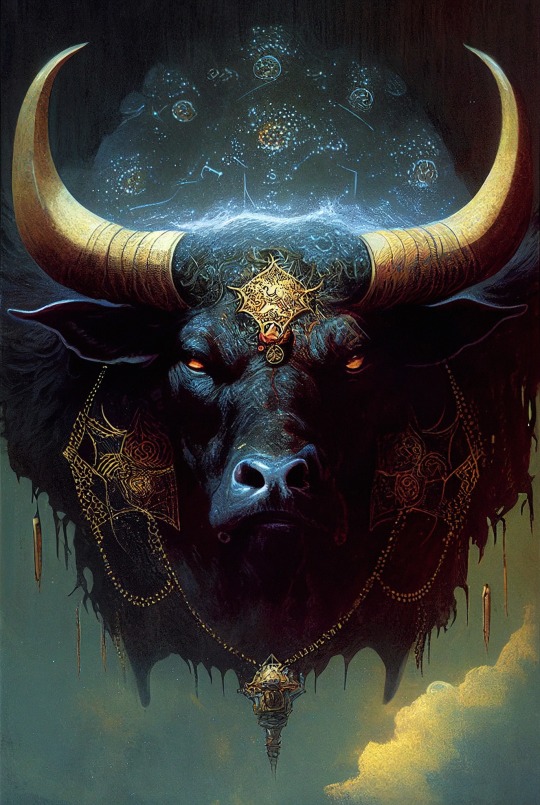
Taurus
Talon Abraxas
Unleashing the Power of Taurus’s Spirit Animal: A Guide
The symbolism of the bull as Taurus’s spirit animal extends to themes of fertility, abundance, and sensuality, making it ideal for rituals related to manifestation and prosperity.
To harness the energy of Taurus’s spirit animal, witches can perform rituals involving earth elements, such as grounding spells or working with crystals like emerald and rose quartz.
Rituals involving the bull spirit can enhance one’s ability to set and achieve practical goals, fostering a sense of unwavering determination and resilience.
Incorporating the bull’s energy into your witchcraft practice can also help you connect with the earth’s energies, deepening your spiritual connection with nature and the cycles of life.
Taurus’s spirit animal
Taurus’s spirit animal is the bull. It is a very stable sign-in which stubbornness and a lot of possessiveness are present. The animal moves and thinks slowly, but the moment it learns something it assimilates it in a lasting way.
Taurus hates change and has the gift of knowing how to handle money. They are not deflected by flattery, they insist on logic and do not disperse their interests. They are usually in excellent health. People of this sign have intense physical magnetism towards others.
Its greatest virtue is patience as well as constancy. Someone born in the sign of Taurus is very tenacious in pursuing a goal, despite being strong and rather slow, and when fate is adverse, he knows how to wait with great calmness and start again with great calmness without getting tired and without wasting time in recriminations that, for him, would be useless. Nature passionately expresses itself, more sensually than sentimentally.
They are loyal individuals with some weaknesses: they have a great sense of friendship, they would really do everything for a friend, even help him economically, even if the Taurus possesses great parsimony.
The formation of the individual is influenced by childhood and the family environment, he knows where he wants to go and does not tolerate impositions, moreover, he hates intrigue and shuns gossip. It becomes very dangerous when he realizes that he has been betrayed and exploited. However, the
Taurus does not lack defects: he has a possessive nature, laziness, and a total lack of self-criticism that leads him to a sort of presumption. The Taurus knows how to give warmth and love to those close to him, but he is equally selfish and jealous of the same people.
Those born under this sign should be taught dominating instincts and the control of arrogance. From a very young age, he will be favored in relationships with others, he wants to show himself well and often succeeds, his bonds are constant and lasting, whether they are of love or friendship. Taurus loves the so-called “good life”, so he usually surrounds himself with beauty.
His home is his temple and he loves décor; he creates a great place where he can feel relaxed and pampered. Those born under the sign of Taurus are considered to be practical and simple people, peaceful and open; they love their home, they have a great taste (aesthetic and more), they are attracted by the pleasures of life and material goods.
With strong and constant characters, they are suitable for the arts or cooking, for works in the field of aesthetics, well-being, agriculture, in any case respecting nature and its balance (great ecological sensitivity). The psychology of those born in Taurus is not as simple and serene as it may appear; on the contrary, it is complex and tormented, often involving a relationship of love, which is understood as the possession of the loved one, of deep jealousy.
The female psychology represented by Venus in her dark side is, in fact, also highly seductive and observing, a bewitching and astute manipulator. Being happy for Taurus means possessing, merging, planting roots, and relying on safe nourishment and support.
The symbolism of this spirit animal explained
Due to its virility and the might of its presence, the bull has been a cult icon for many cultures. In many ancient cultures, such as Mesopotamian, Greek, Roman, and Egyptian, it was considered a sacred animal and it was common to offer the blood of this animal as a sacrifice during sacred rites.
In Celtic symbolism, the bull represents physical strength and power. According to the Celtic beliefs, the bull was extremely virile and therefore symbolized fertility and the power of procreation, which in turn meant extending one’s life.
The druids associated the bull with solar energy, and the cow, on the other hand, with earthly energy. For the Celts, the bull was also a symbol of luxury, wealth, and prosperity: after all, it has been a source of benefit and income for these people for centuries.
Also, according to Celtic thought, it was said that the bull possessed a very important characteristic that stands out above all the rest: the fact that this animal is very stubborn and obstinate. It is also a symbol of virility for men and fertility for women.
According to the Celts, this animal would help improve the mental state in relation to sexual strength. Since the bull was a great source of food for the Celts, it is easy to understand why his figure is associated with an age of serenity and abundance.
According to a more modern perspective, the bull has several meanings related to safety and strength. Although the source is unknown, the bull is said to be a positive symbol for investment in business due to the remarkably active lifestyle it leads in its natural habitat.
Some aspects of the symbolism associated with this animal are stability, virility, strength, prosperity, security, fertility, determination, and help.
31 notes
·
View notes
Text
Israeli Agriculture. Development of a Resource in Service of an Ideology
Israel’s agricultural system is characterized by an intensive system of production employing the latest engineering techniques and biotechnology. It contributed 3% to GDP and employed 2% of the population in 2006. Agricultural output in 2008 was worth about $5.5 billion, of which 20 percent was exported (Statistical Abstract of Israel, 2008). Israel’s agricultural system has evolved in large measure due to political and historical factors that extend back beyond the establishment of the state of Israel. In Israel, endogenous drivers of agricultural policy, including religion, culture, socioeconomics and demographics, take on monumental importance. Foremost among these is the role of Zionism in shaping agricultural and water policy. Agriculture was integral to the realization of the Zionist project since its inception. The settlers were led by a pioneering spirit and a back to the earth ethos, which aimed to wed the people to the land. This agrarian vision had two branches – conquering the land through its transformation and redemption, and simultaneously the creation of a new Jewish man. «In exile, the story goes, the Jewish people have been separated from nature, forbidden to work the soil and forced to be urban. The Jewish people will go back to the land, and they will be rebuilt by the land. In their return Jews will again tend to the earth and draw strength from their renewed biological rootedness» (Schoenfeld, 2004: 6)[.]
The central goal of Zionism was to create a geographical Jewish presence in Israel/Palestine. Collective agricultural settlement of the land was seen as an integral part of this process due to its role in population dispersal, securing peripheral areas and nurturing a bond between the Jews and their homeland. The other important goal for agriculture was self-sufficiency, in light of Israel’s inability to trade with her neighbours. For these reasons, Israeli is one example of a country pursuing agriculture despite its unprofitability, not to mention the unsuitability of the ecological environment to the agricultural activity (Da’na, 2000: 419)[.] This can be most clearly evidenced through Israel’s policy of water development. As Lipchin remarks (2003: 69): «In a country with naturally scarce water resources it is astonishing to see that Israel’s water policy does not reflect this natural scarcity». For example, for a long time much of Israel’s land mass was used to grow cotton, a water and pesticide hungry plant, rather than food (Richter & Safi, 1997: 211).
[...] Zionist ideology [...] interfaces with agricultural policy in numerous other ways, contributing to the unique character of the Israeli agricultural system. These include: the establishment of collective farms, including kibbutzim and moshavim, to defend against attackers in the early years; large capital inflows from the Jewish Diaspora, the United States and German reparations, permitting modern technologies; a preference for expensive Hebrew labour, including prohibitions against Arab labour; and large subsidies to the agricultural sector of inputs such as water, due to their strategic importance in laying claim to the land. Along with the agrarian vision, the Jews brought with them a European modernizing initiative, which saw the need to redeem the landscape and shape it to the settlers´ will. This implied a series of sweeping changes in agricultural production methods and land use patterns, which would transform the country.
– 2009. Leah Temper, “Creating Facts on the Ground: Agriculture in Israel and Palestine (1882-2000),” Historia Agraria 48, pp. 75-110.
60 notes
·
View notes
Text
In which I get very feral about Angua von Uberwald, as I sometimes do
(Below is a quote from The Fifth Elephant, it contains some spoilers...)
""Carrot! I've got to know something."
"Yes?"
"That might happen to me. Have you ever thought about that? He was my brother, after all. Being two things at the same time, and never quite being one... we're not the most stable of creatures."
"Gold and muck come out of the same shaft," said Carrot.
"That's just a dwarf saying!"
"It"s true, though. You're not him."
"Well, if it happened... if it did... would you do what Vimes did? Carrot? Would it be you who picked up a weapon and came after me? I know you won't lie. I've got to know. Would it be you?"
A little snow slid down from the trees. The wolves watched. Carrot looked up for a moment at the grey sky and then nodded.
"Yes."
She sighed. "Promise?" she said."
* * * * * * * * * * *
PRATCHETT HOW ABSOLUTELY DARE YOU.
How am I supposed to be normal about Angua, the most all-round competent pretty much of all the Watch (and definitely the most alarming fighter), cynical and self-aware and judgemental and brilliant and passionately loyal and very compassionate at times, saying that to her boyfriend. An intensely idealistic and kind and simple and terrifyingly (no, truly terrifyingly) good man. It's implied that their relationship has an inevitable slight d/s-y element, because anything halfway between a human and a wolf is rather a dog, and she is absolutely aware that when he calls, she will come running. Even while she is continually the only person (other than Vimes) who gets seriously snarky about him and isn't easily influenced by his extreme levels of charisma.
And her sheer damn relief in this scene. They've just buried her other love interest, who died trying to save Carrot from Angua's horrifying brother Wolfgang. And Carrot's the only person she trusts this much. This is just the absolute classic monster x human relationship, there is so much going on with them over the course of the several books in which they both appear (though this is the one in which they are both the most in focus) and I am still waiting for any adaptation to do it full justice.
I do not usually get this intense about any m/f relationship, but FUCK.
I also note: we learn in The Fifth Elephant that Angua has another brother who is unable to change shape to looking like a human, and who got out of the family (and away from Wolfgang) too, to work as a sheepdog in Borogravia, where he wins prizes at agricultural shows. Carrot is clearly deeply proud of potentially having a prize-winning sheepdog brother-in-law. Angua finds this extremely irritating. :D
But Vimes and Angua are based in Borogravia in Monstrous Regiment, only a few books later, so I am working on the assumption that Angua visited Andreyi while she was there. :) :) :) I hope they had a good time together. I also wonder whether his human shepherd boss has any idea of his species. :D (I bet Granny Aching would have worked it out, but Granny Aching doesn't live in Borogravia. ;-) )
#gnu terry pratchett#the fifth elephant#angua x carrot#angua von uberwald#carrot ironfoundersson#carrot x angua#andreyi von uberwald#wolfgang von uberwald#sam vimes#tw d/s mention#d/s mention
141 notes
·
View notes
Note
Hi, thank you for your blog. I have a greatsword wielding warrior and a dual shortsword wielding rogue that I would like to have work as a team to take down enemies. How can I write this in a realistic and believable way?
By remembering that the greatsword is a front line combat weapon, and the rogue's combat style is shanking people in the back. This isn't the kind of pairing where you get two characters working in tandem, rather it's a situation where you have two very different approaches to combat and problem solving. Ironically, even before you get to the weapons, these are going to characters who would approach each challenge in very different ways, if they were left to their own devices.
It's up to you whether they bicker over the merits of their approach over the other's, or work together smoothly, playing to each other's strengths. Either route can result in a satisfying narrative, and transitioning from the former to the latter over the course of their adventures can create a compelling arc for them.
As for what to gear them with, that's a more difficult question, but one thing to keep in mind is that both of them would be likely to keep a few weapons on hand. The warrior might keep a smaller sword, a dagger, or a hand axe on their person (probably more than one of the above.) The rogue might also have a bow and some daggers. They might also have a longsword or rapier, depending on the weapons available in their setting. If you're going for realism, a rapier would probably make more sense than dual wielding shortswords. With them off-handing a parrying dagger when they need it.
So, some things that are worth thinking about. Greatswords (and the rapier) are a fairly late sword design. By the time greatswords were in use, militaries were already transitioning into shot and pike tactics. Which is to say, firearms were on the table. In most cases, modern Fantasy, inherits a lot of it's technological approach to Lord of the Rings. There's nothing automatically wrong with this, but it does result in a curious absence of early firearms that would have already existed by the time the greatsword came into use. The existence of magic, or even geological differences in the fantasy world could explain this omission, but many authors simply don't think about it.
There's a lot of reasons why your rogue or warrior might not carry a gun. For the rogue, they're loud, clumsy, and expensive. For your warrior, they're clumsy, expensive, and difficult to maintain. Though it may be worth considering that other characters might shove a blunderbuss against your hero's head to punctuate their argument.
Some other frequent technological stumbling points are, armor designs (a lot of writers are not careful about picking the correct time period for armor designs. Similarly, armor production is very material intensive. So, people living in areas with limited metal won't be able to invest in full plate armor, versus mineral rich nations), fortifications (especially, “ancient ruins,” that are more technologically advanced than the chronology allows), ships (if I had a nickle for every time I've seen a sea going vessel designed to mount cannons in a world without gunpowder, I'd have a couple bucks), architecture, and agriculture. If you have a specific technological level in mind, it's probably a good idea to research that era of history until you have a pretty solid grasp of what life was like. (Fortunately, archaeology should have you mostly covered here, and the stuff you find will be fascinating.)
The short version would be to think about your characters bouncing off each other, rather than just their weapons, and build a believable world for them to inhabit.
-Starke
This blog is supported through Patreon. Patrons get access to new posts three days early, and direct access to us through Discord. If you're already a Patron, thank you. If you’d like to support us, please consider becoming a Patron.
#how to fight write#Starke answers#writing advice#writing reference#writing tips#character building#world building
128 notes
·
View notes
Text
Shovelfolk Agriculture & Cuisine

Some common dishes in the cultures of the Shovelfolk (Astutocentaurus alluvium).
The Shovelfolk are sometimes regarded as the "inventors of agriculture" by the other native sapients. In addition to their surprisingly advanced metallurgic techniques and masonry, they have been farming for over 3 million years, countless eons before most of the other currently extant native sapients even came to be. Quite a few of the planet's most widely used crops, such as the wheat-like réhä used to make bread, are believed to have originally been invented by their people.
Shovelfolk are similar to the more cosmopolitan Fauns in that they are omnivores, eating mostly starchy vegetation supplemented by some quantity of meat, eggs, and fruit. Due to the ample supply of water and minerals offered by the Takaran River, most Shovelfolk cultures are almost obligately agricultural, relying on both the running water of the river and the fertile land on the riverbank to grow their own food. Like many Astutocentaurine cultures, there is a conspicuous lack of dairy in the diets of Shovelfolk, since none of the known animals on Athyrmagaia lactate in a mammalian fashion.
To disrupt the local ecosystem as little as possible, the majority of the crops they grow are derived from species native to the area. The most common crops in their daily regimen are réhä and hetūt, the former a grain-like species of star grass and the latter an edible root. Réhä is used in a similar manner as wheat, often being ground up and then baked to make bread, whereas hetūt is more akin to a potato or turnip and can be eaten either raw or cooked. They also use zhėgel, a more primitive, water-intensive plant vaguely similar to sugarcane, to make various simple sweet treats. In addition to terrestrial crops, they also use the mineral-rich waters of the Takara to cultivate various freshwater aquatic plants as a food source. The leaves of zhattrekekc aquaphytes are used in much the same way as the leaves of lettuce, and the seeds of secondarily aquatic hehhel plants are used as a peppercorn-like seasoning.
Although mainly farmers of locally grown produce, Shovelfolk have also been known to forage for food both near and beyond the riverbank, as well as engage in occasional trade with other cultures for more exotic ingredients. During their annual pilgrimages in search of resources, namely the metals found near volcanoes, they often either harvest (or purchase) foreign spices and herbs to bring home, including those used for medicines that cannot be found in their homeland. Those who live near the coasts often travel closer to shore to harvest sea salt as a condiment and a food preservative. When harvesting fruit, which is relatively rare in the Western Weave, they will rely on the help of allied Oliphaunts, since the only plants that bear palatable fruit in the region are enormous umbrynoids that are often too tall for the tiny Shovelfolk to scale on their own.
Unlike many other agricultural peoples, Shovelfolk do not raise livestock for meat. Their primary source of carnal cuisine is a selectively bred species of tumeofauna known locally as "mėbé." Although it is technically an animal, mėbé grows and behaves more like sessile fungi, which means it is considered a "crop" rather than a form of livestock. Mėbé is farmed underground within the warren in a special higher-humidity chamber, where it is kept fed by organic refuse. Mėbé nodes are usually either eaten raw or cooked, and are a common ingredient of more savory Shovelfolk meals. That being said, they do still make ample use of other animal products as food and resources. Their sole livestock animal, the crawpig, regularly lays infertile eggs that are often eaten as a delicacy and used to make dough, and some of their more unusual dishes are given flavor by being boiled in the animal's urine. Shovelfolk are also known to eat fish and insects, and they will often sun-dry worms to eat as a snack.
25 notes
·
View notes
Text
If Ugandans have a social safety net, it is woven from banana fibers, and if there is a clear path to socialism, it will be lined with banana leaves. The lusuku model, premised on intercropping and smallholder farming, could be the basis for national agrarian reform that improves the lives of Uganda’s agricultural workers without accelerating the destruction of the natural environment. Uganda faces increasing difficulty feeding itself because of climate extremes and land degradation, and this affects farmers more significantly than anyone else. Moreover, since the 1990s, the ruling National Resistance Movement regime sold off and dismantled most of the coffee, tea, and cotton growers cooperatives, leaving smallholder farmers in the hands of the predatory middlemen which cooperatives had been established to protect them against. Unable to collectively bargain and exposed to dramatic fluctuations in the market prices for cash crops, many people left rural areas to search for employment in cities. This has been a driving force behind the massive inequality between rural and urban workers.
Ugandans now produce more food than they consume, even exporting to other countries in the region, yet 41% of people are undernourished, and agricultural production has decreased over the last 20 years. For the most part, the strategy pursued by Uganda’s government has been to encourage the development of ecologically disastrous intensive agriculture for export, privileging foreign investors rather than developing the infrastructure that would benefit peasants. Indeed, while more than 70% of Ugandans are employed in agriculture, the sector only receives around 4% of public investment, and projects aimed at helping smallholder farmers have had very little success, even by their own standards. Many of the government’s investments in agriculture very clearly advantage larger landowners, to the detriment of the poorest farmers. For example, most of the government’s investment in labor-saving technologies has been spent on tractors, which are great for large plots but largely unaffordable or unsuitable for the average farmer, whose plot is usually between 1-3 acres large.
However, a socialist transition premised on agroecological reforms could make use of the existing lusuku model to create the kind of growth that actually improves poor farmers’ lives without destroying their environment. This could begin with reestablishing cooperatives and engineering agricultural prices around social needs and goals, like guaranteeing access to food. Research from around the world has shown that while large, monocrop plantations are good at producing huge volumes of one crop, smallholder farms are more productive when evaluated on a per-unit area and are capable of securing national food sovereignty. Why, for example, should Ugandans buy rice imported from Pakistan or Vietnam when banana intercropping yields more calories per hectare than rice? Lusukus could feed the nation without relying on foreign experts, development aid, or the capital-intensive inputs now being imported to grow for export. Because lusukus are far better for the soil, they also improve the nation’s capacity to resist severe floods and drought, effects of climate change that hit poor farmers hardest. In these ways, the lusuku model could provide a sustainable path to socialist development.
285 notes
·
View notes
Note
i went down a rabbit hole of your au like a month ago and I still have brainrot from it like holy crap man I think about it everyday I literally start kicking my legs whenever I see an update why am i like this
but anyways, the various species in your au have caught my interest for a while. Since I’m assuming this takes place somewhere after totk I’m wondering how the other races have come back into play (like the zonai, twili, etc)
also is bestir actually a reincarnation of demise in this au or did he just coincidentally end up with the triforce of power?
luckily for you I am also starved of human interaction :)
First of all aw :] tanks <3333
I’m glad you like my little guys! The Twili live in the depths of Hyrule, supersuper deep underground, alongside the Shadows and some weird flora and fauna. Zant rules over them, using the brutality of the Shadows to act as like a uhhh. Really shitty law enforcement system. They typically get to around 13 ft tall and 115 lbs on average (they are super light). They can communicate in secrecy via the intensity and rhythmic flashing of their bioluminescence. Kinda like uhh if you’ve read Wings of Fire they’re like Seawings. They have a similar lifespan to Zoras, if not longer. Here’s a sketch if you don’t know what they look like, I don’t post about them a lot. They usually have livestock and live vegetarian lifestyles due to frequent food shortages. The way they got into the depths (I refer to them as the Chasms in soh, jsyk) is a spoiler so :] I cry everytime
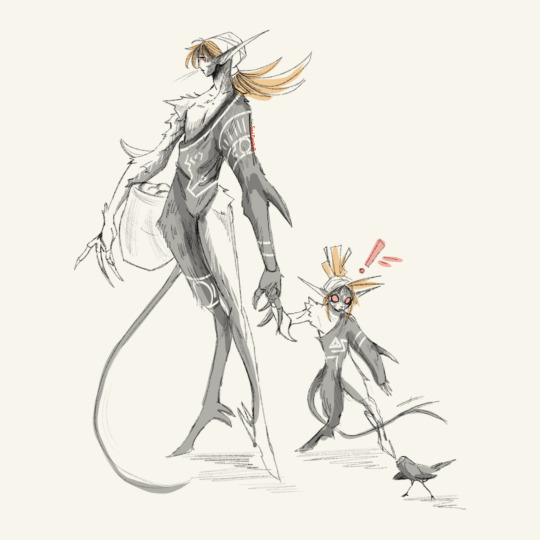
So the Zonai are a bit spoiler-y if I talk about them too much but they are like. The opposite of the Twili. They are very technologically sophisticated and independent but not very agriculturally advanced and live in the sky. Instead of fearing Kargaroks like the people of the surface do, they worship them. They live alongside the ooccoo. Yeah, the tiddy birds. I gotta design them too. Damn.
The Kokiri and Koroks live alongside one another, the Kokiri acting more like guardians of the forest rather than peaceful inhabitants. They look hella scary but are generally kindhearted and pure. They are… also spoilery.
And yes Bestir is an incarnation of Ganondorf! Instead of falling into the divine influence of Demise, he favors Din because that’s just what his moms taught him. Idk it’s confusing I’m not great at storytelling
29 notes
·
View notes